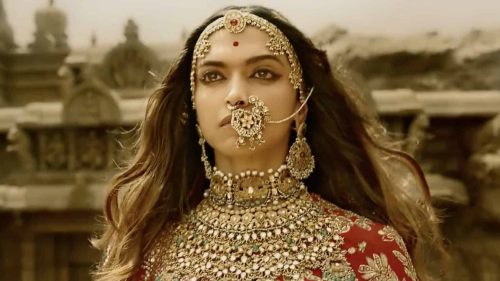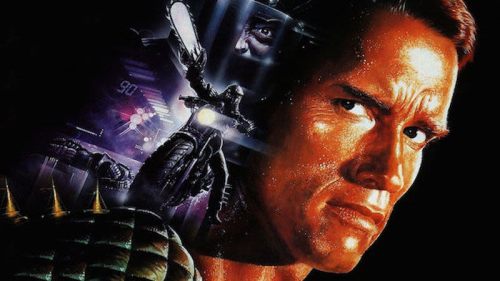Holiday Travel Woes: DIE HARD 2 (1990)
Die Hard ('88) is a masterpiece. You already know this (and certainly don't need me to tell you). Bruce Willis' first go 'round as John McClane arguably left one of the biggest marks on action cinema history, introducing not only a unique formula - how many times have you been pitched to watch "Die Hard on a [Insert Location]"? - but an archetype (the hangdog everyman) that Willis minted an entire brand on. Hans Gruber (Alan Rickman) is one of the slickest villains to ever walk the planet, talking about suits and then shooting Japanese businessmen in the head like there's zero consequence, while his blonde Viking henchman (Alexander Godunov) is dispatched like a rabid dog. Director John McTiernan brought it all together in a 2.35 anamorphic package that made Jan de Bont a bona fide Hollywood star (though to Paul Verhoeven fans, he was already aces). We toss the word "classic" around too easily these days, but Die Hard undoubtedly deserves it.
Following that up wasn't going to be easy, especially considering McTiernan wasn't going to be available for the sequel (as he was in the middle of The Hunt For Red October ['90]), so instead they went the Beverly Hills Cop II ('87) route. With Renny Harlin - who'd just scored a sizable hit with A Nightmare on Elm Street 4: The Dream Master ('88) - Fox hired a pure stylist, not too far removed from Tony Scott. Coming from the world of commercial filmmaking (where Harlin helmed spots for companies like Shell) he had a comparable hyper-kinetic eye for violence that made Ridley's brother so damn essential to genre filmmaking, not to mention a knack for dark, smoky anti-reality (his previous horror picture, Prison ['87], plays like a haunted castle movie on 'roids). He was a perfect match for a project that would certainly need to amp up every recognizable element for audiences to get on board with McClane's second throw down with terrorists.
Loosely based on Walter Wagner's novel 58 Minutes - which, if you've never read it, is actually a pretty solid bare bones bit of pulp - original Die Hard scribe Steven E. de Souza (The Running Man ['85]) and shoot 'em up screenwriter Doug Richardson (Bad Boys ['95]) cobbled together a draft that's stripped down to the bare essentials. We don't even get an intro beyond a crashing title card before we're at Dulles Airport in Washington, D.C., watching John's car get towed (well, really, it's his mother-in-law's) while he waits to pick up Holly (Bonnie Bedelia), who's flying in from L.A. Meanwhile, Colonel Stuart (an angular William Sadler) mobilizes his team of mercenaries, marching out of their hotel, ready to take the travel depot down on one of its busiest days: Christmas Eve. Stuart's demand? For the United States to release the notorious General Esperanza (Franco Nero), one of the country's biggest enemies in the war on drugs, into his custody.
That's right, this is certainly Die Hard through and through, though Harlin's movie hits the ground running in a way the first one did not. That's probably the wisest choice Die Hard 2 makes, as had Harlin decided to slowly build toward the nefarious plot that will place John and Holly in danger on Christmas yet again, audiences would've probably gotten bored and taken a moment to actually consider the ludicrousness of even making a sequel to something as singular and game-changing as Die Hard in the first place. By the time John's out of the blowing snow (another sound choice: shifting away from the seasonless heat of Los Angeles) and chasing two of Stuart's men through a restricted baggage area - not to mention engaging in a deadly firefight without a second thought - we're swept up in the breathless madness of it all. Who cares if your sequel is implausible if it's this wildly entertaining.
It feels somewhat perverse to write, but setting a Die Hard sequel in an airport on Christmas Eve just feels correct in a certain way. Nobody likes to travel around the holidays; in fact, it often becomes one of the most nightmarish elements of attempting to see your loved ones on Thanksgiving or Christmas. But we do it because we care. The exploitation of that caring inadvertently adds a weird dose of mean-spiritedness to Col. Stewart's attack on Dulles International. He could've easily been holding your loving family members hostage in one of those hovering planes, while you hoped against hope that they can land that jet in the middle of this blizzard, and everyone can make it to the tree alive and well to open presents. It's become a cliche for movie nerds to say Die Hard is one of their favorite Christmas movies, but allow this writer to offer up a compromise: Die Harder is probably the better Chrismas movie, while McTiernan's Die Hard is still the superior overall motion picture.
Dulles is turned into a microcosm of moving human parts, all of which operate to try and keep these overflowing terminals running during this insane rush. McClane's recommendation to shut down the baggage terminal falls on the deaf ears of Carmine Lorenzo (Dennis Franz, in all his obnoxious glory), Captain of Aiport Police, who can't afford to bring any part of this operation to a halt, dead body or not. It isn't until Col. Stuart remotely takes control of the tower and knocks out the runway lights that the head of air traffic control, Trudeau (Fred Dalton Thompson), considers this out-of-towner's advice. Never one for patience, McClane's faxing fingerprints of the soldier he just iced out West to Al Powell (Reginald VelJohnson, in a winky Twinky cameo), only to discover the operative's been declared dead by the Department of Defense for years. This is some serious Black Ops shit. How does this keep happening to the same guy?
Instead of offering up a Hans Gruber clone, de Souza and Richardson take their central baddie in a one-hundred-and-eighty-degree bend from the original. Introduced while doing naked Tai Chi, Sadler's career military man is a no-nonsense caricature we've seen a hundred times before in these types of pictures. But the veteran character actor is still able to inject new life into this stoic soldier, letting his eyes light up when he realizes his new nemesis is the same man who near single-handedly saved the hostages in Nakatomi Plaza two years earlier. This is a formidable opponent, and his team is an impressive array of familiar faces - Robert Patrick, Don Harvey, John Leguizamo, Vondie Curtis-Hall - all working in unison to wage their own private war against the American government. So, while they may not be the most original set of bad guys McClane's faced, they still possess plenty of personality.
Stuart's demands are simple: if General Esperanza's plane lands, and the squad is gifted an aircraft to fly him to a non-extradition country, none of the passengers aboard the now-circling jets will be harmed. Yet once he receives word of Lorenzo's SWAT Team getting into a high caliber shoot out with his boys, Stuart delivers a vulgar display of power that reveals what Harlin's sequel truly is: an Irwin Allen-style disaster production for Cannon Films nuts. The fiery crash the Colonel orchestrates is a marvelous mix of practical pyrotechnics and primitive digital tweaking, creating a fireball that goes careening across the runway, igniting John's burning need for revenge. That random plane could've been Holly's after all, not some British import piloted by Colm Meaney. Now it's time to hunt this animal and put him down for good.
The movie's steadily escalating second half does what every great action film should: builds to a properly satisfying crescendo. Even better: Harlin isn't content to just deliver more gunfights and broken glass. No, he wants to toss grenades into the cockpit of a gigantic military bird, after she's had her windshield shot out and Esperanza lands her himself in a swirling snowstorm. Then he stages a snowmobile chase once McClane uncovers Stuart's hideaway in an abandoned church. Die Hard 2 climaxes in not one, but two physics-defying fist fights on the wing of the mercs' getaway jet, where terrorists and their co-conspirators are shoved into massive engines, and all you need to take down an ascending aircraft is a fuel dump and a lit Zippo. Yippie-kay-yay motherfuckers, you're all gonna die.
Many franchises become diluted over time, and the Die Hard films are no different (just try and watch the abysmal A Good Day to Die Hard ['13], I dare you). But the first three movies comprise a trilogy that's as good as any you're bound to watch. Beyond McClane, what unifies them is McTiernan - who would return for the arguably superior second sequel Die Hard With A Vengeance ['95] - along with a trio of cinematographers, all bouncing light and shadow off various surfaces. While he's no Jan de Bont, Oliver Wood (Face/Off ['97]) does a hell of a good impersonation, letting lens flares almost blind the audience during a night-time blizzard; where Vengeance's Peter Menzies Jr. would trade cold for hot, introducing the first film in the series not set during Christmas. Maybe that minor tweak to the formula was for the best, as Die Hard 2 relentlessly doubles down on everything that made the first so special, and there was no way McTiernan could hope to live up to that Yuletide duology, instead opting to ruin the hungover cop's summer with a bit of old fashioned brotherly revenge.



